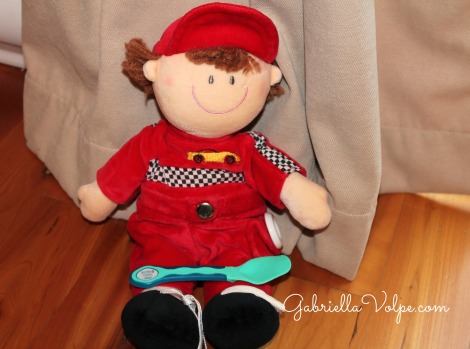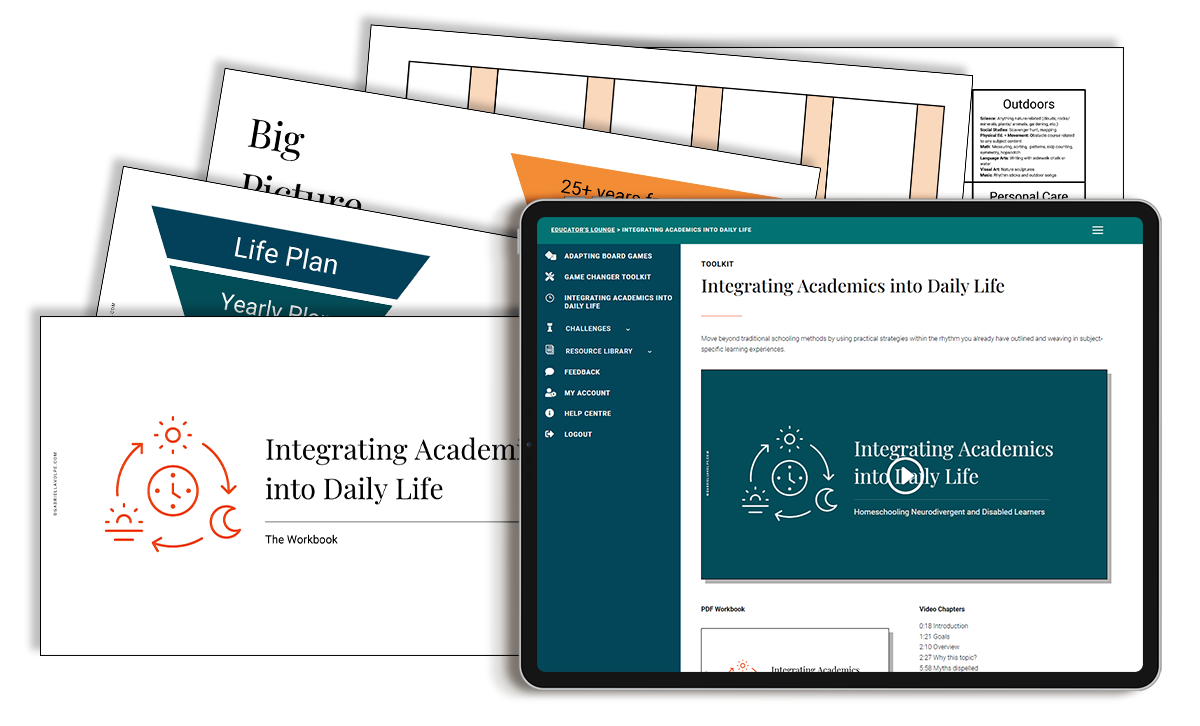Note: If you’re reading this series for the first time, I suggest you look at the daily structure post to understand the routine we follow in our morning circle.
One of the advantages of homeschooling a neurodivergent or disabled child is that they can learn life skills where they’ll be using them the most: within the home and community. Once again, the morning circle allows for quick skill practice while you have your child’s attention.
If you’re conducting the morning circle professionally, you can still have the learners practice these skills. I suggest modelling with toy sets, but ultimately, we want to be practicing in the actual settings (i.e., in the bathroom, at a kitchen sink, etc.)
Activities of Daily Living (ADL) include a focus on anything we do daily for personal care, home management, or community functions.
Among ADL skills are:
- Dressing self
- Bathing/showering
- Washing face
- Washing hands
- Grooming (combing/brushing hair, cutting nails, etc.)
- Feeding self
- Using the toilet
- Taking prescribed medication (when older and able to do this safely)
- Housework (laundry, cooking, cleaning, making the bed, etc.)
- Functional activities: (using the telephone, computer, AAC, etc.)
- Shopping (groceries, clothing, managing money, etc.)
- Taking public transportation and getting around the community
- Etc.
In the morning circle, you can practice some ADL skills using common and safe materials that the child will be able to handle based on their developmental level. Also, be sure to keep the activities short in a circle. You don’t want to cook in the morning circle, but you can practice some of the skills they’ll use for cooking later.

This doll is terrific for ADL because it teaches dressing self: snap belt, Velcro and lace shoes, zipper on the back, button pocket and the entire jumper comes off to dress the doll completely. We practice feeding him, combing his hair and washing his hands, face and body parts. I love that I can toss this little guy in the washing machine to make him brand new again when he needs it (but, shhhh… don’t tell my son that!).
Activities of daily living practice in the morning circle
- Folding small towels (or using small pieces of fabric)
- Sorting laundry into two baskets: towels in one, socks in another
- Manipulating cleaning tools: brushes, sponges, rags, a spray bottle with water
- Practice feeding self or feeding a doll
- Manipulating cooking utensils: spatula, whisk, bowls, measuring spoons and cups
- Practice dressing self with outdoor clothing: hat, boots, coat
- Practice dressing a doll
- Pretend play: washing face, washing hands, washing arms and legs on the doll first, then self
- Practice brushing/combing hair on the doll first, then self (looking in the mirror)
- Pretend play: using the telephone
- Etc.
How can you incorporate ADL in the morning circle?
Related Article:

Integrating Academics into Daily Life Workshop
Discover how to integrate academics into daily life. For homeschoolers of neurodivergent and disabled learners.

0 Comments